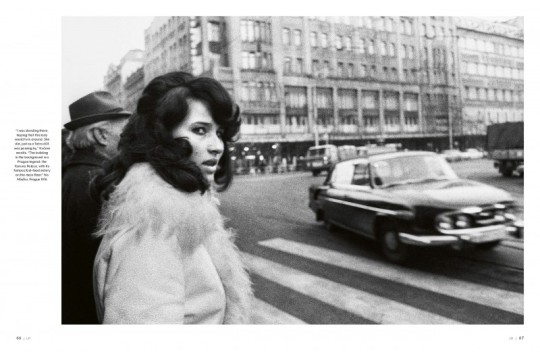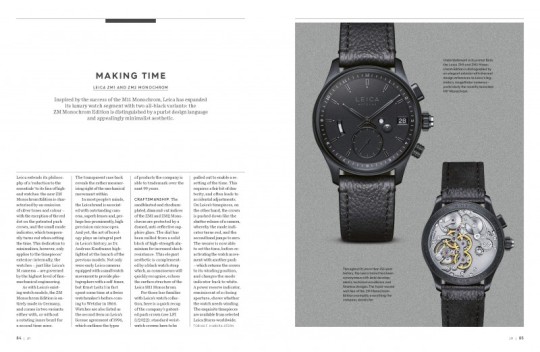#lfi magazine
Photo

have a seat
62 notes
·
View notes
Text
Horst H. Baumann
There is an interesting retrospective on the postwar German photographer Horst H. Baumann in this month’s LFI.
I always enjoy mid century German Wirtschaftswunder photography, and he had a series on the Ruhrgebiet.
His photos are also strongly graphical, and he made some interesting experiments in color photography decades before William Eggleston and friends.
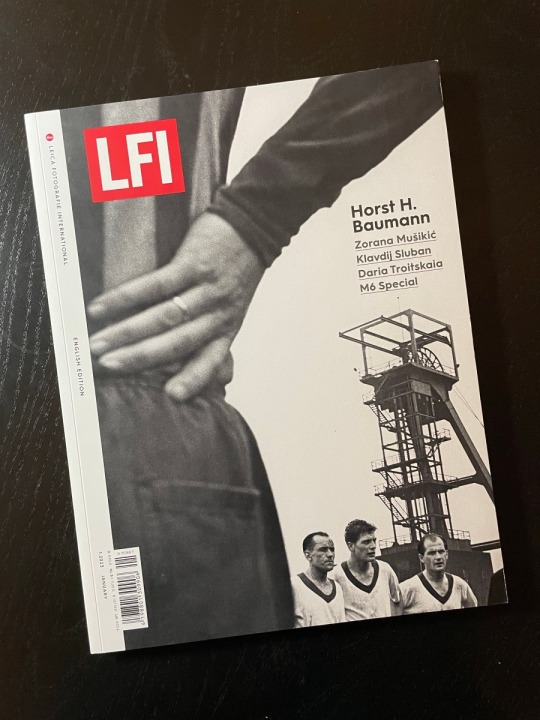
View On WordPress
1 note
·
View note
Text

Yumna Al-Arashi, Axis of Evil (Yemen, Afghanistan, Iran, Iraq), 2020
in Leica Fotografie International (LFI) magazine:
"This photograph was made for my first European solo show in Berlin, in the gallery Anahita Contemporary. It's a self-portrait alongside Anahita Sadighi, Moshtari Hilal and Susu AbdulMajid. We are respectively from Yemen, Iran, Afghanistan and Iraq. Despite our different roots I noticed that we all share a similar background, having grown up in Western nations that often vilify the places our families are from.
I also noticed the strong profiles of each of our faces. So I decided to create this portrait with the title Axis of Evil – a play on the term so frequently used to describe our home countries when we were growing up. It also embraces the beauty of our distinctive noses, which are often treated as ugly, something to be changed. I wanted to embrace these qualities of ours in this image, creating something powerful, defiant."
#couldn't find this one specifically on tumblr so. here it is now#yumna al-arashi#women photographers#women artists#photography#imperialism#MENA#SWANA#middle east#yemen#afghanistan#iran#iraq#wanted that quote on here because you all know how i am about noses and there is little that i can say that others haven't.#features#faces#women
974 notes
·
View notes
Link
0 notes
Text
Gazeteci Süer’in Roboski fotoğrafına Leica-BarTur ödülü
Gazeteci Süer’in Roboski fotoğrafına Leica-BarTur ödülü
AMED – Leica Magazine (LFI) ile BarTur Fotoğraf Ödülleri tarafından düzenlenen “Yılın Foto Muhabiri Yarışması”nda, ikincilik ödülünü gazeteci Mehmet Masum Süer’in Roboski fotoğrafına verdi.
Belgesel fotoğraf sanatçısı Mehmet Masum Süer, fotoğraf makinesi markası olan Leica’nın dergisi Leica Magazine (LFI) ile BarTur Fotoğraf Ödülleri tarafından düzenlenen “Yılın Foto Muhabiri Yarışması”nda,…

View On WordPress
0 notes
Text
Sophie Tissier: «Je veux juste qu’Eric Coquerel reconnaisse qu’il a eu des comportements déplacés»
Libération du 04 juillet 2022
L’ancienne figure des gilets jaunes dénonce des comportements «lourdingues» possiblement qualifiables d’«agression sexuelle» qui remonteraient à une soirée à Grenoble en 2014. Elle a saisi ce dimanche le comité des violences sexistes et sexuelles de LFI. Eric Coquerel, lui, dément.
Le député insoumis Eric Coquerel est mis en cause pour de supposés comportements déplacés. Son accusatrice, Sophie Tissier, ancienne figure des gilets jaunes et coprésidente du parti Union citoyenne pour la liberté a saisi ce dimanche matin le comité des violences sexistes et sexuelles de LFI. Ce dimanche midi, Coquerel a nié en bloc, réfutant toute «drague agressive» ou «geste déplacé» à l’encontre de Sophie Tissier. Il a notamment été soutenu par Jean-Luc Mélenchon. Auprès de Libération, Sophie Tissier dénonce des comportements «lourdingues», qu’elle juge possiblement qualifiables d’«agression sexuelle», remontant à une soirée à Grenoble en 2014. Elle espère qu’Eric Coquerel «va reconnaître» les faits et se dit «écœurée» face à la défense de l’élu par différentes personnalités du parti. Comment prenez-vous les dénégations d’Eric Coquerel et de La France insoumise après votre signalement ? Je suis en colère, je suis écœurée, il me dégoûte. Ça me dégoûte aussi de voir que tout le monde le soutient de manière indéfectible, alors qu’il est connu comme le loup blanc pour être un dragueur lourdingue, un peu salace. Remettre en cause ma parole aujourd’hui est une faute morale. Je suis même un peu étonnée. J’espère que je vais libérer la parole d’autres femmes. Quels faits reprochez-vous exactement à Eric Coquerel ? Ce sont des faits qui remontent à fin août 2014, lors d’une soirée dansante après les universités d’été du Parti de gauche à Grenoble. J’avais laissé ça sous le tapis car, même si je considère qu’ils sont graves, je ne suis pas sûre qu’ils relèvent du délit. C’est de la drague lourdingue, des contacts physiques… Mais je pense que cela peut être reconnu comme une agression sexuelle. On était dans une soirée à Grenoble. Il se collait à moi, à mes fesses, je sentais qu’il me humait, qu’il me reniflait les cheveux. Il était insistant, il me reluquait. Il me faisait des réflexions graveleuses. Il a insisté pour me faire danser, je me suis échappée, je l’ai ignoré. Puis on a été en boîte, je ne me souviens plus s’il est monté dans ma voiture. Dans la boîte de nuit, il a recommencé à venir me coller, j’ai été plus ferme et lui ai clairement demandé de me laisser tranquille. Je me souviens être allée aux toilettes et me retourner plusieurs fois en craignant qu’il me suive. Je ne savais pas à quel point il serait dangereux ou pas, je sentais que j’étais sa proie. La soirée est arrivée à sa fin. Il a commencé à m’envoyer des SMS : «Rejoins-moi dehors, je vais à mon hôtel.» «Rejoins-moi dans le taxi, j’ai un super hôtel, tu ne vas pas regretter.» «Ne fais pas ta mijaurée ne sois pas coincée.» J’ai trouvé ça gonflé de sa part. Malheureusement, je n’ai plus ces textos.Pourquoi prendre la parole aujourd’hui ? Quand j’ai vu que Rokhaya Diallo s’exprimait, je n’avais pas prévu de parler. De reparler plutôt, de retémoigner. J’ai fait un tweet de soutien à Rokhaya Diallo avec le compte Force jaune en expliquant que l’on peut attester des comportements problématiques d’Eric Coquerel. Derrière, j’ai été recontactée par des journalistes qui avaient retrouvé mon témoignage, anonyme à l’époque, dans un magazine [Causette, ndlr]. J’ai confirmé que c’était moi, puis j’ai décidé de témoigner publiquement. Aujourd’hui, tout s’emballe, il faut suivre la démarche jusqu’au bout. Jusqu’à porter plainte ? Il n’est pas exclu que je porte plainte, s’il faut le faire, je le ferai. Pour l’instant, je veux juste que mon témoignage soit entendu et qu’Eric Coquerel reconnaisse qu’il a eu effectivement des comportements déplacés. Qu’il fasse amende honorable. Ça aurait même éteint l’incendie [médiatique] je pense. Mais visiblement, il est dans le déni total et c’est ça qui est terrible. J’ai envoyé mon signalement au comité des violences sexistes et sexuelles de LFI ce dimanche matin mais je n’ai eu aucun retour pour le moment. Je pensais que l’on me contacterait, Danielle Simonnet par exemple qui gère ce comité. Celui-ci a été créé en 2018, je ne sais pas trop comment il fonctionne concrètement, j’ai envoyé mon signalement à l’adresse mail dédiée et mai
0 notes
Text
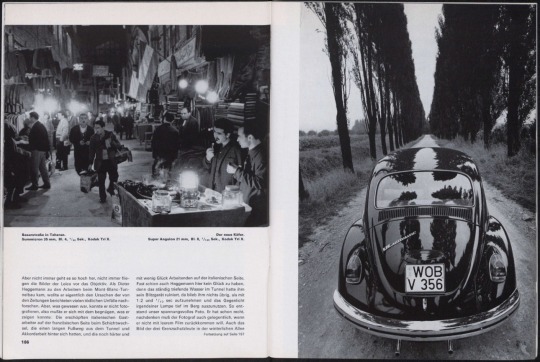

LFI Magazine spread 1969
4 notes
·
View notes
Text
L'Islamo-gauchisme - ( II ) : les idiots utiles du djihad...
Le gauchisme ''à la papa'' a bien changé : de peuple, de cible, de recrutement (j'allais écrire : de victimes). Ayant perdu ''le vrai peuple'' (qu'il n'a jamais eu. Mais il croyait l'avoir !) par sa bêtise, ses errements et ses dévoiements, par la vacuité de ses analyses et la perversité des solutions qu'il ne proposait pas, par son déni du réel et de l'évolution du monde, il s'est ''rattrapé aux branches'' en catastrophe, en racontant qu'il avait trouvé dans l'islam un prolétariat de substitution qui, espéraient les idéologues de cette erreur qui se rêve Terreur, allait voter pour lui et lui assurer la continuité de son pouvoir et la continuation de ses prébendes. Ah ! les cons !…
Il n'y a pas besoin d'être ''voyant extra-lucide'' pour constater qu'une religion, quelle qu'elle soit, n'est ni un lieu de compromis, ni un terrain d'entente idéal, ni une variable d'ajustement éventuelle, mais qu'elle est une force qui peut soulever tout un peuple, contre son souverain et sa police, contre un régime, un mode de vie, un monde. Les djihadistes sont donc prêts à tolérer un temps des compagnons de route et même à leur faire croire qu'une alliance est envisageable, pour et avec eux. Cet (anti)raisonnement a, par exemple, amené le syndicat étudiant Unef à se rapprocher des Étudiants musulmans de France qualifié de bras armé des Frères musulmans par Mohamed Louizi (Pourquoi j'ai quitté les frères musulmans -Ed. Michalon). En croyant sauver quelques meubles lors des élections, elle se fait bouffer par plus vicieux qu'elle ! Résultat : l'Unef n'est plus écoutée sur les sujets sérieux, comme la précarité étudiante en temps de covid. Et... c’est bien fait !
Cette énorme faute de jugement, presque un crime contre la pensée, ne date pas d'hier : on se souvient de ces militants de la Ligue communiste révolutionnaire (LCR), devenue le Nouveau Parti anticapitaliste (NPA) qui faisaient alliance avec des islamistes radicaux obnubilés par ''l’américano-sionisme'' et prônaient, au nom de la ''lutte contre l’impérialisme'', l'élimination de l'État d'Israël. J'ai en mémoire le Forum social européen accueillant en grande pompe le faux prédicateur-vrai violeur Tarik Ramadan à Saint-Denis, invité (on croit rêver !) comme ''leader religieux, représentatif d’une partie du prolétariat'' ! Même le Nouvel Obs avait titré une Une digne du Figaro : ''Confusion au Forum social européen : Les gauchistes d’Allah''.
Des bribes de vérité apparaissent dans les feuilles de chou les plus contaminées, même si, dans Libération, une Clémentine Autain revendique le titre d'islamo-gauchiste... que ce quotidien classe dans les ''insultes policées et intellectuelles'' (NDLR - ce qui n'a aucun sens !). Elle précise même, comme pour s'assurer que personne ne peut savoir de quoi elle parle : ''Je ne comprends pas exactement ce que veut dire le mot, mais si ça désigne l’intersectionnalité des luttes, alors oui, c’est ça qui me préoccupe. Je suis de gauche, et je me bats contre le rejet des musulmans en France'' (sic !)... Mais a l’opposé, on lit sous la plume de Pierre-André Taguieff, que ‘‘entre les islamo-gauchistes du Parti des indigènes de la république (en lutte contre la domination blanche et le peuple blanc) et les islamo-fascistes qui massacrent des infidèles au nom du Djihad, la différence est mince''.
De son côté, Franz-Olivier Giesberg évoque la ''décomposition intellectuelle d'une certaine gauche française''. Et même Bernard-Henri Lévy (qui ne fait pas partie des gens que je lis ni ne respecte mais dont je sais citer un court extrait lorsqu'il a une brève crise d'intelligence) écrit : ''il suffit de lire Foucault pour prendre la mesure de la tentation identitaire, racialiste et, au fond, darwinienne qui n’a jamais cessé de hanter la gauche française, et de la longue généalogie de cette façon d’assigner les opprimés à leur origine, de les enfermer dans leur couleur de peau et leur ethnie''.
La Presse française sortirait-elle de son rituel aveuglement coupable ? Dans une enquête du Figaro Magazine sur ''les agents d’influence de l’islam'', les journalistes Judith Weintraub et Vincent Nouzille dénoncent ''les relais intellectuels de l'islamo-gauchisme, responsables politiques ou acteurs associatifs'’ qui, écrivent-ils, ''investissent l'espace médiatique''. Dans cette enquête, on croise, sous des formes et à des degrés divers, les sociologues Edgar Morin, Geoffroy de Lagasnerie et Raphaël Liogier, l'islamologue (?) Tarik Ramadan, l'historien Jean Baubérot, le démographe Emmanuel Todd, le géopolitologue Pascal Boniface, les journalistes Alain Gresch et Edwy Plénel (qu'on est certain de retrouver dans tous les ''mauvais plans’’), les politiques Jean-Louis Bianco, Caroline de Haas, Clémentine Autain, Benoît Hamon et Danièle Obono ou encore des personnalités associatives telles que Marwan Muhammad, Houria Bouteldja et Rokhaya Diallo. Il ne manque à leur liste que Benjamin Stora, qui a entrepris d’inventer une nouvelle histoire réécrite de l'Algérie, de lecture très macronienne, c'est tout dire ! On en reparle bientôt, promis.
Mais s'il n'y avait que les islamistes comme groupe organisé coupable de volonté de conquête ! Ce serait oublier le climat de complicité intellectuelle et morale dans lequel les soldats d'Allah poussent leur avantage dans la sphère médiatique, intellectuelle et universitaire, qui se résume en deux mots : domination, d'un côté et pour les uns, et trahison de l'autre, pour les autres... sur tout ce qui touche au capitalisme, au christianisme, à l'Occident et à son histoire, et à Israël... (qui est intrinsèquement coupable, et son adversaire, même agressif, même radical, même terroriste, bénéficie donc de la bienveillance que l'on doit aux damnés de la terre). Il faut trouver une soif de justice dans la violence, la trace d'une faute dans celui qui la subit. En fin de compte, la question à 10 balles est : qui, du gauchisme ou de l'islamisme a pollué l'autre, et lequel sortira vainqueur de ce mano a mano ?
Mais quand, soi-disant au nom d'une minorité, d'une cause ou d'un mensonge historique, de beaux esprits très vilains veulent déboulonner les plus belles figures du patrimoine artistique, musical, littéraire, historique et militaire ou à arracher les plaques de rues au nom de grands hommes... on n'a même plus besoin de talibans pour dynamiter les statues ! Pourquoi donc les fous d'Allah s'épuiseraient-ils à faire taire nos cloches quand ils peuvent compter sur nos élus, en guerre contre le ''séparatisme catholique'' ? Et quand un Florent Boudié, rapporteur général du texte de loi sur ce qui aurait dû être ''Séparatisme'' et qui n'est plus que... rien du tout, établit un parallèle entre les enfants qui font leur première communion et un viol incestueux, ou quand le pitoyable Eric Coquerel (LFI) affirme que le voile d’une mariée est le symbole de la soumission de la femme à son époux, que faut-il penser, sinon qu'ils sont idiots ? Ce sont des maniaques de la diversité qui traquent toute infraction à leur code d'effroyable ''bonne conduite'' et qui terrorisent ceux dont la plume, le dessin ou le verbe défendent la liberté d'expression. Tendez l'oreille ! Pour les ''idiots utiles du djihad'', la seule vraie menace qui pèserait sur nos institutions, ce serait la première communion des petites filles... alors qu'ils donnent la main à ceux qui rêvent d'abattre la République. Mon Dieu, qu'ils sont cons !
Un dernier point doit inquiéter ceux qui ne sont pas encore contaminés ou ''porteurs malsains'' : l'accès de courage de notre ministre inconnue a vite été réorienté vers des terrains contrôlés par la bien-pensance : charger le CNRS d'une enquête, c'est assurer une fois de plus le parfait suivi de l'intenable et mortel ''et en même temps'' macronien : un coup à droite (’’Tremblez, canailles ! On lance une enquête...’’), et un coup à gauche (’’... mais on l'oriente vers un organe qui va la classer’’). ''Je suis oiseau, voyez mes ailes... Je suis souris, vive le chats''. On sait dans quel état d'esprit sera abordée la demande de Frédérique Vidal : le CNRS est à la pointe des faux travaux de fausse recherche sur la prétendue écriture dite inclusive, sur la ''race'' en tant qu'arme de guerre, ou sur ''Sexualités, identités & corps colonisés'' (sic !), dans Ed CNRS-2019. C’est tout un programme !). Il faut tendre encore l'oreille... ‘’Ami, entends-tu le vol noir des corbeaux sur nos plaines....’’ ?
H-Cl.
8 notes
·
View notes
Photo

FRANCE, Bonningues-les Ardres (Pas-de-Calais). 18/03/2019: Ancienne voie étroite de Anvin vers Coulogne. Chemin d'accès vers la gare, réaffectée en habitation. 50°47'13.998" N 2°0'46.998" E “The Battle for the Rail”. my contribution to an assignment by MAPS for the “Institut Pour La Photographie” in Lille about abandoned railway stations in the Hauts-de France. In Hauts-de-France as in Europe as a whole, the railways, intimately linked to the indus- trial era and the capitalism of the early 19th century, conveyed coal and the resulting social inequalities and struggles. In the second half of the 20th century, industry and the labour market diversified. The significant investment required to maintain an extensive rail network was no longer justified. The democratisation of the car in the 1960s drained all public investments: roads were tarmacked, countless roundabouts were built and railway stations were abandoned. Then came the 21st century: growth becomes sluggish, the car compounds global warming, petrol prices continue to rise. Driving a car is criticised for ecological reasons, while the yellow vests take over the roundabouts, strategic locations, essential for mobility. Social inequalities related to mobility resurface. Living in small villages becomes difficult. People leave them. Small towns are dying. Today, the railways struggle to perform efficiently and meet current challenges: a modified and environmentally friendly transport map. A money-making rail network is not going to become a railway serving individuals any time soon. As illustrated by the abandoned stations in the Somme, Pas-de-Calais and the Oise. The photographs were taken with a Leica S with a Summarit-S 35, kindly made available by LFI Magazine. #MAPS #MAPSimages #lfimagazine #institutpourlaphotographie https://mapsbase.photoshelter.com/.../C0000LEM2x.zmXCU https://www.instagram.com/p/CFgaqz0py7v/?igshid=9gf7fpgbjhuy
39 notes
·
View notes
Photo
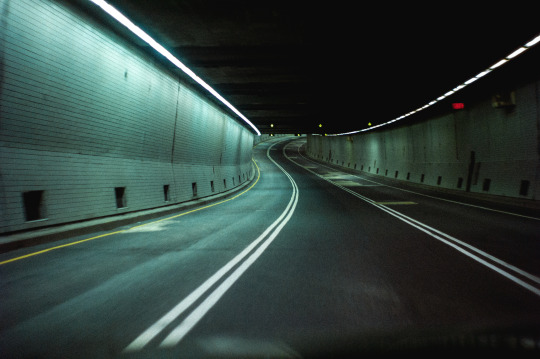
Path is never straight
899 notes
·
View notes
Text

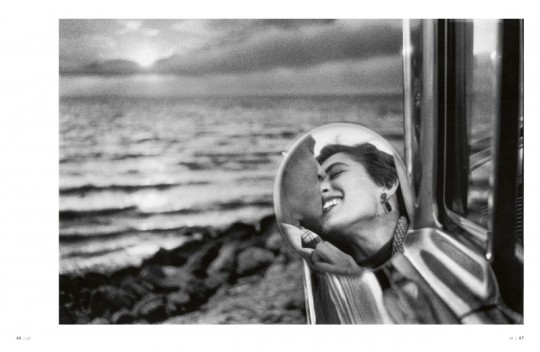
LFI MAGAZINE 08/2023
1 note
·
View note
Photo
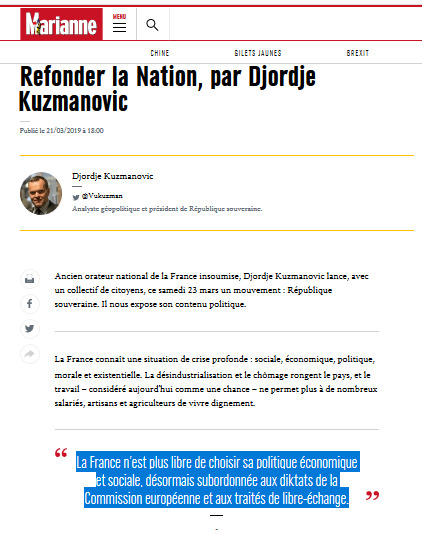
#nationalisme : le cercle des patriotes de @vukuzman épouse @MarianneleMag #RepubliqueSouveraine ... Nous sommes nombreux à n'être guère étonnés de cette nouvelle publication (déjà annoncée par ce précédent…
#"refonder la nation"#@vukuzman#Kuzmanovic#LFI#Marianne magazine#nationalisme#Polony#souverainisme
0 notes
Photo
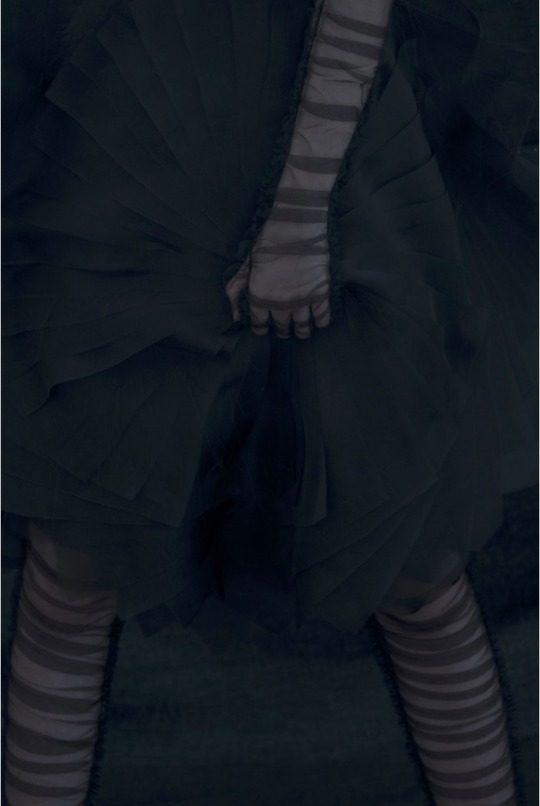
© Tuan Anh Le
via: LFI magazine
10 notes
·
View notes
Text
On Landscape Interview 2019
By Paul Hill & Tim Parkin | Posted November 12, 2019
For the Meeting of Minds conference last year, we printed off a picture for Paul Hill, but sadly it didn't arrive in time for the exhibition. Paul asked us to donate it to the Stills Gallery in Edinburgh. Whilst dropping it off, we had a quick chat with Paul and his partner, Maria Falconer, about art and contemporary photography and some of the subjects he's approaching in his rewrite of "Approaching Photography".
https://youtu.be/yt3_nmt-LfI
Tim Parkin (TP): I wanted to talk about this possible disparity between what could be called your typical ‘hobby’ practitioner of photography and the more academic/contemporary side of photography (pictorial, romantic vs ‘new’ ways of looking at photography). I was wondering if you still see this dichotomy in photography? Or do we get hobbyists transcending the pictorial or contemporary/fine art/academic photographers embracing a bit of beauty now and again?
Paul Hill (PH): There is definitely a cross over, and there always will be. It’s a personal problem for me, actually sticking to one subject matter. I think it just negates so many possibilities for making interesting pictures or stretching yourself as a photographer. You can end up essentially illustrating your hobby or your interests which makes it very difficult to change tack or make quantum leaps. In workshops, we come across a lot of people who you would say are mainstream hobbyists but they take on board and embrace the more challenging ideas that we talk about. I think they haven’t previously, largely because they haven’t had an art or photographic education, and so to be put in these situations is unique for them. It’s the first time and a lot of them really take to it. Because it’s new, it’s different.
TP: Is it essentially a lack of exposure and a lack of knowledge? So, are they essentially receiving mixed messages from the vernacular use of landscape?
PH: What I was trying to say in the talk at the Meeting of Minds conference was, why are you here, why are you doing it? Are you aware of all the possibilities that are there to explore? Express something that might be your own involvement rather than looking at templates and matrices. These templates have been provided by talented people who found their own way there and were innovative for their time or expressed something which was more than just the information that’s in front of them when they photograph. Photography appears very easy but the more you get into it is a lot more complicated, or at least it can be. Essentially, on a surface level, you can make a picture quite easily.
EXPRESS SOMETHING THAT MIGHT BE YOUR OWN INVOLVEMENT RATHER THAN LOOKING AT TEMPLATES AND MATRICES. THESE TEMPLATES HAVE BEEN PROVIDED BY TALENTED PEOPLE WHO FOUND THEIR OWN WAY THERE AND WERE INNOVATIVE FOR THEIR TIME OR EXPRESSED SOMETHING WHICH WAS MORE THAN JUST THE INFORMATION THAT’S IN FRONT OF THEM WHEN THEY PHOTOGRAPH.
I put the picture of a butterfly made by my iPhone on Facebook the other day. You may have seen it, Tim. I saw these butterflies which were tortoiseshells and painted ladies, down this footpath. So, I tried to get close with the iPhone and I did and I got them. The results are absolutely stunning. You would not even be able to get that quality if you used a macro and a flash. A normal lens would not be able to have done it because of the minimum focusing distance, so you wouldn’t be able to get close enough, and all the rest of it. I’m writing a new edition of my book “Approaching Photography” and I’m using this example of how photography has moved on since 1982 when the first edition came out.
TP: But the modern camera takes it all away doesn’t it?
PH: What I’m saying is, that is the difference between now and then. It’s become relatively easy to make an image nowadays and at the end of the day, that’s what it’s about. If we know we can do that, without too much hassle, we know how to drive the machine, then we can go on to try to explore ideas with that new skill that you have now acquired. These skills aren’t at a high level it has to be said. Nothing like comparing yourself with a concert pianist, for instance.
YOU’VE GOT THIS WONDERFUL MACHINE TO RECORD THAT AND TELL YOU THE STORY THAT YOU WANT TO, WHICH IS IMPORTANT AS AN INDIVIDUAL BECAUSE WE ARE ALL UNIQUE, AND WE ALL HAVE OUR OWN STORIES, AND HISTORIES.
However, that ease releases you to say anything you want and visually deal with any sort of subject matter, in all sorts of different places, and different areas - intellectually or physically - that you want to. You’ve got this wonderful machine to record that and tell you the story that you want to, which is important as an individual because we are all unique, and we all have our own stories, and histories. That's what I’m interested in - other people’s photographs and stories. I don’t want to see a style that may look great but is repeated and repeated. Whether it’s down in Lands End or John O’Groats, I’ve seen those pictures, everyone has seen those pictures, and that’s fine. There’s a market for people who want to buy those or use them as illustrations. But they are not very individual or original.
I’ve done quite a bit of writing for photographic magazines - and known quite a few editors over the years - and one should never forget that these are mostly all consumer magazines. They don’t exist unless they sell advertising and they also sell a lifestyle. And the market for cameras is now the amateur one. That’s why the emphasis is on the amateurs and on high spec gear, that’s what they are trying to sell. They wouldn’t be doing themselves any favours if they said “it isn’t about the camera gear, it’s about what you do with it,'' they would lose advertisers and go bust. It’s a perfect capitalist model at the end of the day. Persuade the readers that it’s the machine. ‘You’ve got a great camera there, it must take some great pictures’
TP: Do you think academic/contemporary photography avoids certain subjects, aesthetics and ideas? Because they have become mainstream? (i.e. beauty, popular composition memes)
PH: There’s one thing Martin Parr and I have in common that is that we’re populists and a bit suspicious of too much academisation in photography. I think that the problem is with a lot of conceptual work, to use that as an example, is that you have to have a certain sort of education not only to produce it but also to understand it. Many times, the idea may have been great, but the visual representation of that idea is not very engaging. It’s using photography and the camera in a different sort of way; you’re not trying to tell a story by using visual language.
Like other experiments, these movements come in like blue sky thinking in science. People are going to explore new concepts, and even I have pushed the boat out a few times with what I’ve done. I’ve done some more conceptual pieces that are more about ideas. But if the images are not visually interesting or stimulating then I think it’s a case of throwing the baby out with the bathwater.
TP: I’ve heard this said repeatedly by a few contemporary photographers, that they avoid the use of playing with aesthetic perspectives because the effect gets in the way of what they are trying to say.
PH: Absolutely, but there is a wonderfully wide range available to us of how we use and think about photography. That’s what I was trying to say at the conference, just think about photography. Don’t necessarily think about the landscape, seascape, or the adventure. That’s all part of it but more importantly, just be aware that there are other options open to you to engage with that may relate to that location or that space.
I can understand the satisfaction of producing these wonderful photographs of waterfalls and streams etc, but It’s a bit like painting by numbers. There’s nothing essentially wrong with that, but what you tend to get is another lot of the same pictures. What you really need, to use a cliched photographic word, is exposure to other ideas. That’s why we don’t compromise on the workshops we do. We know that it’s a niche area but there are people out there who want, and respond well to, that exposure to new ideas because what that does is bring photography back to them. They are in control and not being measured by what other people can do better with their new Canon XYZ or whatever it is. They can use whatever they want photographically but try to make something that is unique.
That’s what interests me, what’s new and different, and that goes through into my photography. I’m not saying that what I’ve produced is a unique photograph or history changing, of course, it isn’t! But all of the things I’ve tried to be involved with, I have always tried to look at how it can be done from a different perspective. Because it’s boring to follow what other people have done.
BUT ALL OF THE THINGS I’VE TRIED TO BE INVOLVED WITH, I HAVE ALWAYS TRIED TO LOOK AT HOW IT CAN BE DONE FROM A DIFFERENT PERSPECTIVE. BECAUSE IT’S BORING TO FOLLOW WHAT OTHER PEOPLE HAVE DONE.
Photo enthusiasts are always being told to be creative but most people seem to think that means photoshop. When we started the RPS Contemporary Group - I was the first group and panel chairman - there were these people that said: “How do you define contemporary?” This does sound very condescending, but if you have to explain what contemporary is, go and join another group. But you can’t be like that as there are people who are open to the ideas and at the end of the day, it’s just semantics.
Our first option was that it was about contemporary life and thought, but that doesn’t really work either. But since then they’ve tried to find all sorts of definitions. If you look at the RPS definition, it’s a bit of a dog's dinner. Distinction panels should really be defined as either applied, academic (history, research etc), scientific or art? If you try to slice it into too many compartments it confuses people. It means that the compartmentalisation is increased, rather than the idea that we’re all in the same pool but swimming with slightly different strokes.
TP: How do you present these ideas to your audience?
PH: If you’re bringing a fresh set of ideas to people who haven’t come across them before, you have to take on board the audience and take them on a journey. We talk about what we do and it’s obvious that some of them haven’t seen work like this and would not see, in some instances, the merit of it.
They might see some merit in my picture of Enoch Powell, and they get that and it’s funny, or Maria’s dance pictures, or something like that. But when we are dealing with that which is a bit more personal, they would say “I can’t see why you’d want to photograph that”, then you have to get over that it is not actually about that object, it’s about an idea. You can talk up a set of pictures and talk the talk, but sometimes you have to walk the walk. And if it needs a lot of explanation, I get worried. Personally, I give a way marker to my work, by way of a small written or verbal introduction to whatever piece I’m doing.
TP: A hint on how to read it?
PH: Yes, this is who I am, this is what I do, without a lot of detail. For someone who talks about photography and writes about photography, I think there is such a thing as a visual language. I want to give that language a chance.
I was talking at the conference about the “one picture tells everything” - why should we take that on board, why should we follow that particular route still? Like the landscape aesthetic that was set up in the 19th century - there are so many other opportunities. If people see more work by people like Robert Adams, Simon Norfolk, Jem Southam and John Blakemore, they are going to see why John is photographing dead tulips? Not 'aren’t these beautifully crafted prints'. The print becomes the experience and the vehicle for an idea.
FOR SOMEONE WHO TALKS ABOUT PHOTOGRAPHY AND WRITES ABOUT PHOTOGRAPHY, I THINK THERE IS SUCH A THING AS A VISUAL LANGUAGE. I WANT TO GIVE THAT LANGUAGE A CHANCE..
TP: I think people have a problem in seeing contemporary/project work as a group of single images when in fact they can’t really be separated and retain their meaning.
PH: This is the problem I’m having to face as I���m basically selecting single images to illustrate a point I’m making in my book. When I’m talking about photo essays and about projects, I’ll have a matrix of images to give the idea of a body of work. But it is difficult when you’ve got to be restricted to a certain size. You have to really say the work is the book, not this one picture. There are so few opportunities to fully explore an idea, with a narrative really; but more photography books are being published than ever and with the internet, we can present these ideas using multimedia tools.
TP: So, could one of the differences between a hobbyist photographer and a contemporary art photographer be the use of single image vs the collection of images?
PH: I think that’s true. When we get people on workshops that is the one thing that is the revelation to them - you are telling them that their idea can be expanded. You can say more with the sum of the parts as it were.
Maria Falconer (MF): The idea that we can deconstruct images and they might have never really come across that idea and then they realise that it’s layered. In the same way that a whole series of images brings meaning through the different parts. That can be revelatory to them. If they’ve done anything before, they have deconstructed in a formalistic way, for example by sharpness and saturation - but not meaning. It’s the meaning in a symbolic fashion.
PH: To get back to what we were saying about why people do landscape and approach it in a particularly repetitive way. Maria is a good example of this, having come from a background of mostly photographing people and dancers. The expression Maria uses is that it is very difficult to put a frame on a landscape.
TP: Landscape doesn’t essentially have any narrative associated with it directly so you can’t frame a narrative-less landscape.
MF: I know what you mean. It’s not that I’m looking for a narrative, I just can’t put a frame around any part of it. I’ve tried so many times and I’ve come to the conclusion that is just not how I see. I love looking, I love running about, I love climbing and hiking, I just cannot frame it.
PH: After moving to the Peak District in 1974 I used the landscape as a backdrop to human forms in a project I called "Prenotations". But I realised a few things when creating “White Peak, Dark Peak”. As a resident of the area, I would go out and photograph around where I lived - a 2 mile radius to start with (and later I expanded it further). I did this as an exercise. It was in black and white using mostly flat lighting. What I realised when I got into certain interesting situations was that for whatever reason (I had a 35mm lens on my Leica) it wasn’t conforming to what I wanted. So it forced me to think about the foreground more.
I was having to think about things which I would not necessarily normally put in the picture. I found that I was looking down at what you walk on and the landscape became not the conjunction of the horizon and the sky but about the marks on the land. I am fascinated by the two-dimensionality of a photograph and how the horizontal perspective can 'flip' and can become vertical and this became a noticeable feature of "White Peak Dark Peak".
TP: That’s a nice way to think about equipment isn’t it. Most people think about equipment as “I want it to do everything. I want a system that can do everything for me”. Instead of that, let the camera be a limiting factor.
PH: That's the discipline. We do an exercise about going out with a particular focal length. I remember working as a photojournalist and on a slow news day, a colleague and myself said next time we go out we’ll just use a 28mm or a 180mm and do the job with that and see it as a challenge!
It’s that’s sort of exposure to those ideas that we are talking about. Some people are going to think, “but I’m quite happy with doing this and it conforms to what I like and it gives me pleasure”.
There was this one guy on a workshop who had a high powered job intellectually, something scientific. We have these little exercises we make people do, and a lot of people took to them really well but this one guy just couldn’t do them. People who knew him said perhaps you should have a chat with him. He said, “I never take photographs I don’t like”. Intellectually he was programmed toward perfection and we were saying “throw all that out!”. In the end, he did get it and produced some great pictures.
So sometimes you get these people who are incredibly bright, but you’ve got to get them to loosen up; and that is more difficult for somebody who’s a really keen amateur but has been, say a lorry driver all their life.
I do a talk called Moments of Recognition, which is taken from a quote by Edward Weston. There’s that idea in Zen in the Art of Archery, where you’re actually seeing beyond the target. You need to hit the target, but not look at it. I think that there is an element of Zen at that moment where you are able to put a frame on things. If you release yourself to what you viscerally are responding to, and then take a picture. There’s no way you can analyse that process. To do that is what you should try and aim to do as it opens you to seeing photographs everywhere.
I don’t believe success comes with hard work but with persistence. Persistence is hanging around long enough to know that there’s something there. Hanging around long enough knowing when the window of opportunity comes along. The difficulty with the Zen thing is that people don’t recognise when the window of opportunity is there. If you’ve been a press photographer you know, it’s when someone slips on a banana skin.
People will snap, snap getting pictures which are boring but hoping something will happen. When you see that moment you have recognised and produced this unique piece of information, data, art, whatever you want to call it, it’s got to be something that no-one else has done. That moment of time will never be repeated and that is wonderful to be able to do that. That’s what I think is very important to do - be original - because photographers are seen very much to be down the pecking order. I’m sure you’ve found that.
THAT MOMENT OF TIME WILL NEVER BE REPEATED AND THAT IS WONDERFUL TO BE ABLE TO DO THAT. THAT’S WHAT I THINK IS VERY IMPORTANT TO DO - BE ORIGINAL - BECAUSE PHOTOGRAPHERS ARE SEEN VERY MUCH TO BE DOWN THE PECKING ORDER. I’M SURE YOU’VE FOUND THAT.
TP: I’ve got a friend who’s had a successful painting career in Germany and he decided he was going to be a photographer. Everybody told him he was committing suicide commercially and artistically. He agreed completely but still did it.
PH: When we began our pioneering work in photo education and the Arts Council etc. in the 70s, we started from different points of view, and were very different individuals trying to elevate the status of photography so that it was taken seriously. In terms of sales, photographs will never be in the same league as paintings.
TP: That’s my last question, which was if one of the photographers that we speak to for instance who’s a member at a camera club and says I don’t understand it, as I look at some of these high end valued pictures and I don’t understand why they are worth so much money such as the Gursky Rhine image.
PH: Well neither do we!
TP: Is this the curse of people trading/investing in art?
PH: As a professional photographer and having earned my living out of photography one way or another since 1965, I can say it puzzles me. It's not professional jealousy, as I don’t want to take pictures like him, but it's a bit of a mystery.
I’ve found going my own way has not necessarily made me much money but the pictures that I made that people thought were a bit odd 40 years ago are now in major collections. I’ve followed my nose and it’s worked!
I’ve made a reasonable living and despite the shite, you have to deal at times, it's been wonderful and extraordinary. I had a chat once with Geoff Crawley from BJP, who came from a science background, and he said, “you’re a freelance aren’t you?” and I said "yes". He said, “I’m always interested in people who freelance and you know I think freelancing is more a lifestyle choice”. He'd worked for Ilford and been a company man and he’d never been a freelancer. He said he didn’t know if he could make such a lifestyle choice. I thought he’s right you know. Life is about making those sort of choices and, for me, the decision about freelancing was about being free.
youtube
2 notes
·
View notes
Photo
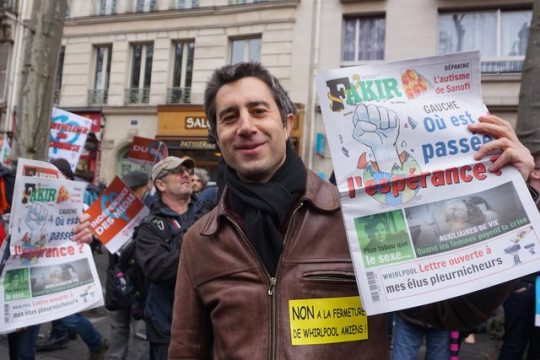
Un nouvel article a été publié sur https://www.rollingstone.fr/lvmh-francois-ruffin/
Le groupe LVMH a espionné François Ruffin

Entre 2015 et 2016, le groupe de Bernard Arnault aurait infiltré la rédaction du journal Fakir, dirigé par le journaliste et député LFI François Ruffin
Le très médiatique député La France insoumise François Ruffin, journaliste et cinéaste, récompensé d’un César du Meilleur documentaire pour Merci patron !, est au cœur d’une polémique politique digne… d’une fiction.
D’après Le Monde, entre janvier 2015 et mars 2016, l’ancien directeur du renseignement intérieur Bernard Squarcini serait parvenu à infiltrer la rédaction du magazine trimestriel Fakir, fondé par François Ruffin, qui y occupe encore aujourd’hui le poste de rédacteur en chef. D’après Jean-François Digeon, ancien chargé de sécurité de LVMH, M. Squarcini aurait fait entrer « une taupe qui travaillait pour une société d’intelligence économique qui avait fait les poubelles de Fakir ou piqué des documents » – la société en question, I2F, est dirigée par un ancien policier, Hervé Séveno. Des informations confirmées par L’Obs et Mediapart.
Des pratiques qui auraient été provoquées en réponse au tournage de Merci patron !, qui suivait l’histoire du couple Klur se retrouvant au chômage suite à la délocalisation de leur usine de textile (filiale du groupe LVMH) en Pologne. Suite au coup de projecteur dont l’affaire jouit lors de la diffusion du film, les équipes de Bernard Arnault auraient vraisemblablement décidé de garder un œil sur François Ruffin et ses collaborateurs de Fakir, allant jusqu’à collecter des informations « relatives à la vie privée » détaille Le Monde.
2 notes
·
View notes
